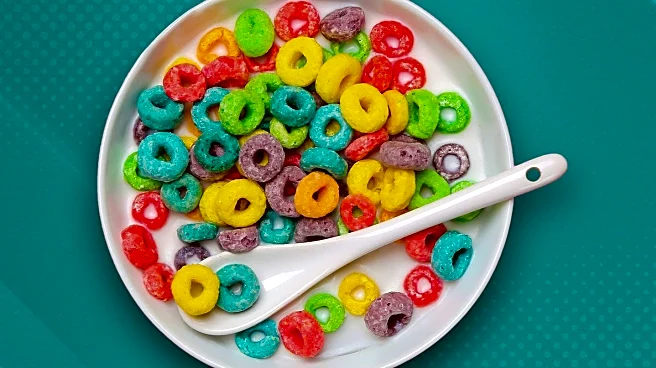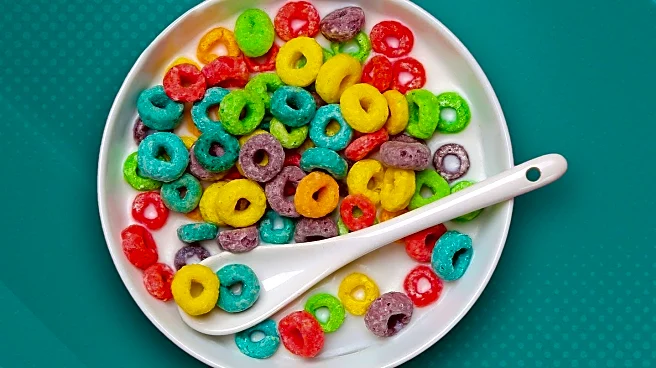What's Happening?
A recent study has revealed concerning trends in breakfast cereals marketed to children aged 5 to 12. The study, which examined cereals launched between 2010 and 2023, found that these products have become sweeter, saltier, and less nutritious over time. Specifically, the fat, sodium, and sugar content in these cereals has increased, while beneficial nutrients like protein and fiber have decreased. On average, a single serving of cereal contains nearly three teaspoons of sugar, which is about 45% of the maximum daily added sugar recommended by the American Heart Association for children. Despite these findings, Consumer Reports suggests that parents can still make healthier choices by carefully examining ingredient lists and nutrition facts, prioritizing cereals with whole grains as the first ingredient, and considering options with less than 6 grams of added sugar per serving.
Why It's Important?
The findings of this study are significant as they highlight the growing nutritional concerns associated with children's breakfast cereals. With the increasing sugar and sodium content, these cereals may contribute to unhealthy dietary habits and potential health issues such as obesity and diabetes in children. The study underscores the importance of making informed choices at the grocery store to ensure children receive a balanced diet. By selecting cereals with higher fiber and lower sugar content, parents can help stabilize their children's blood sugar levels and promote satiety, reducing the likelihood of overeating later in the day. This information is crucial for parents, educators, and policymakers focused on improving children's health and nutrition.
What's Next?
Parents and caregivers are encouraged to take proactive steps in selecting healthier breakfast options for their children. This includes mixing higher-sugar cereals with lower-sugar, higher-fiber alternatives and adding unsweetened dried or fresh fruit to boost fiber content. Additionally, measuring cereal portions can help manage sugar, calorie, and sodium intake. As awareness of these nutritional concerns grows, there may be increased pressure on cereal manufacturers to reformulate their products to better align with health recommendations. Consumer advocacy groups may also push for clearer labeling and marketing practices to help consumers make more informed choices.











